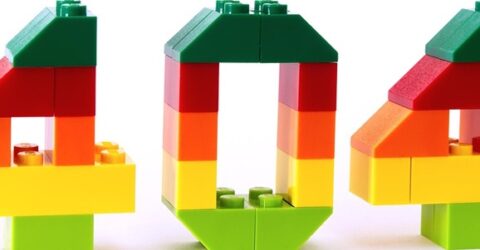Website error codes – and what they really mean
Website error codes tell you why a particular resource isn’t available, so ignore them at your peril…

We’ve all been there.
You type in a website address or click on a hyperlink, only to find the page or resource you wanted to access is unavailable.
The default response is usually a muttered curse and either a tap of the Back button on your preferred web browser, or an internet search for an alternative resource.
However, next time you’re greeted by a website error code, pay attention to what it’s telling you.
There are a total of 63 status codes a server can send to an end-user device – and they all mean something subtly (yet significantly) different…
Five alive
Website error codes are divided into five three-digit categories:
- 100 codes are informational and temporary.
- 200 codes report a successful request.
- 300 codes involve redirecting traffic to another address or resource.
- 400 codes indicate an error on the client side.
- 500 codes indicate an error on the server side.
Straight away, it’s obvious that 400 codes are the ones you need to worry about, indicating that the server is operational but your device is unable to complete the request.
While 500 errors also mean you won’t be doing whatever you’d planned to at this precise moment, they’re effectively beyond your control.
Commonly spotted messages in this category include 500 (Internal Server Error), 503 (Service Unavailable) and 504 (Server Timed Out).
These aren’t issues you need to worry about as a member of the public.
Error codes like 506 (Variant Also Negotiates) and 508 (Loop Detected) errors are aimed squarely at a technical audience.
Four to the floor
The most commonly seen website error codes are the ones relating to client-side errors, since most servers have features like redundancy which ensure they’re always accessible somehow.
The classic 404 Page Not Found error is ubiquitous for good reason – it means your device can’t access the server (or the internet).
A 403 Forbidden message is more ominous, but simply means you don’t have permission to access a specific webpage – the server understood your request but won’t action it.
A politer version is the 401 Unauthorized (American spelling) response, which usually means you’ve entered an incorrect address or have invalid user credentials.
It might relate to missing login data, expired or outdated cookies or an incorrect API key – a code that lets you access application programming interfaces.
If you’re starting to struggle with all this industry jargon, we won’t even try to explain the origins of 400 errors which are so obscure you could live to be a hundred and never see them.
Consumers shouldn’t ever encounter a 412 (Precondition Failed), 424 (Failed Dependency) or 431 (Request Header Fields Too Large) message on any device.
Something’s brewing
Let’s back away from this powderkeg of technical terminology by considering the 418 I’m A Teapot error – a status response code indicating that the server is unable to percolate coffee.
This error debuted on April Fool’s Day some years ago but was subsequently granted permanent status after a campaign by software developers and tech employees.
If you see a 418 code when attempting to access a website, don’t feel alarmed – and rest assured your caffeine intake for that day should be unaffected.
Other 400-series website error codes exist to tell you what’s gone wrong, though there isn’t always an obvious resolution for a 408 timeout, or a 402 payment required response.
It’s always worth restarting the device you’re using, and – if problems continue after a restart or if they’re replicated on another device – rebooting your broadband router as well. https://broadbanddeals.co.uk/guides/the-unknown-benefits-of-restarting-your-wifi-router/
A restart often resolves specific problems, but it won’t fix a 404 Page Not Found error which suggests you’ve either clicked on an obsolete hyperlink or entered an address wrongly.
An estimated 90,000 old websites are deleted every day due to no longer being required, corporate rebranding, owners failing to renew their domain ownership and so forth.
Even Google can be fooled into providing links to obsolete addresses, while 301/307/308 redirects may not always be in place to divert traffic from an old URL to a new one.






